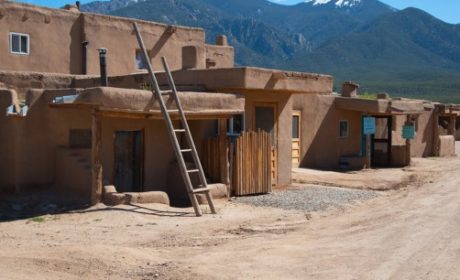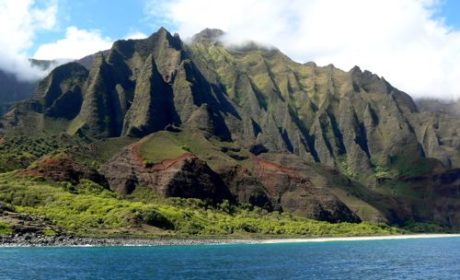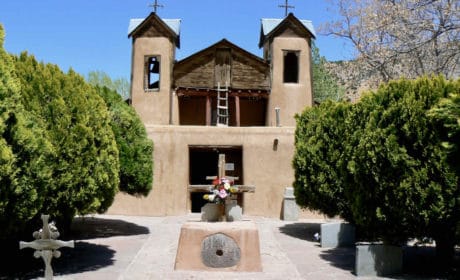Are you looking for the best outdoor things to do in Albuquerque, New Mexico? Did you know that there’s lots more to do beyond hot air ballon rides, one of the claims to Albuquerque’s fame?
James Richardson shares his tips for outdoor activities in the city. Exploring Albuquerque is a good respite from your time driving the high road to Taos or other road trip adventures in the American Southwest.
Most visitors to the Albuquerque area of New Mexico associate the city with hot air ballooning. True, it is a premier ballooning destination, but Albuquerque and its surrounding area is chocked full of outdoor activities in the way of hiking, bicycling, wildlife, and bird watching.
The area mountain ranges, the Sandias and the Manzanos, provide much of the outdoor fun. But within the city itself, there are protected areas, called Open Spaces, that afford low impact recreation.
In addition to the outdoors, there are historical and Native American attractions. And, hot air ballooning.
Table of Contents
The best outdoor things to do in Albuquerque
When my bride of nearly 56 years and I visited Albuquerque and the surrounding areas, we went with a group, most of whom were younger than ourselves. The group was mostly interested in the outdoor activities in Albuquerque with a little history of the area mixed in.
Albuquerque Old Town and Open Spaces
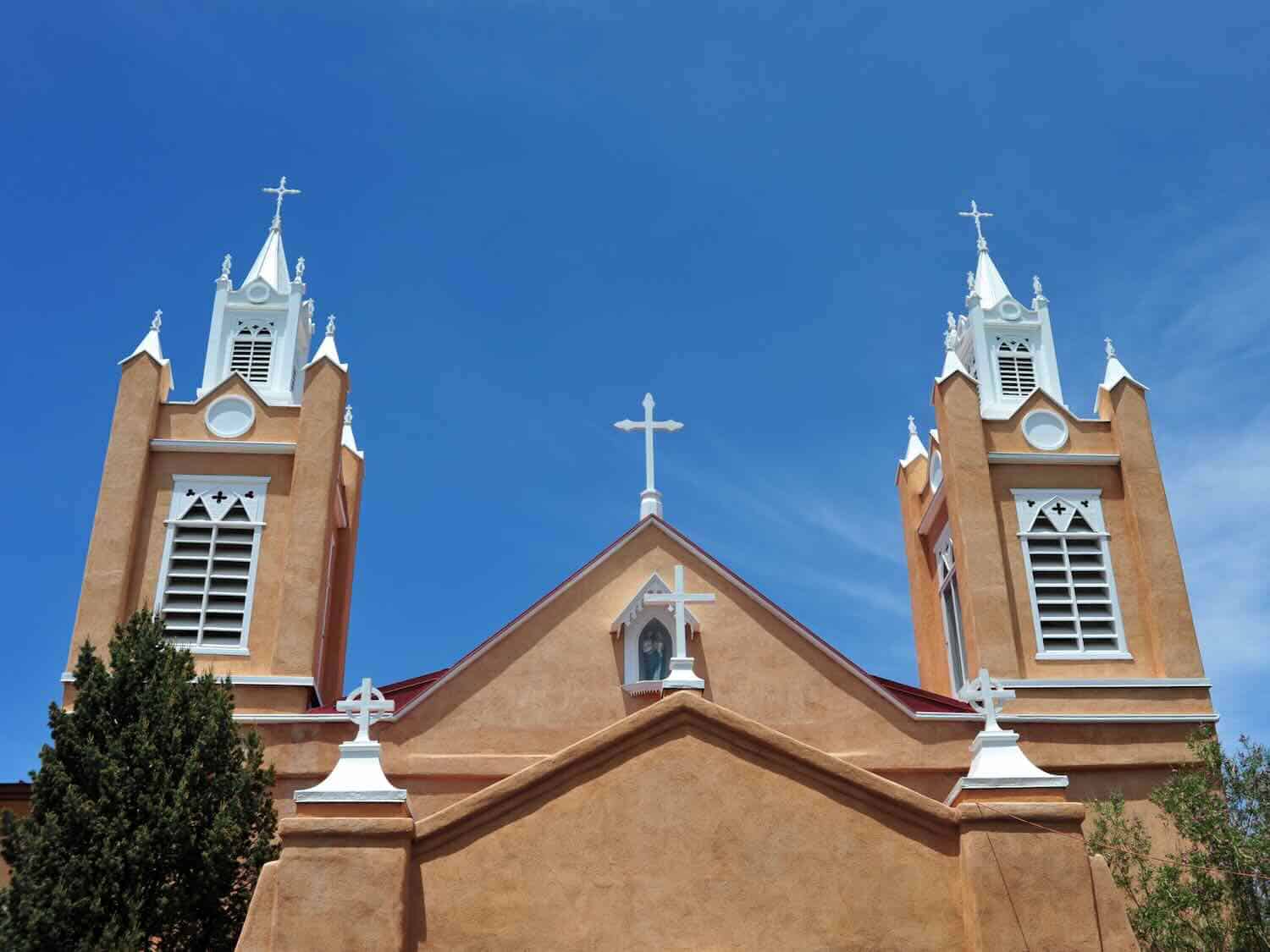
The first area we visited was the Old Town, which was the original town site of Albuquerque. Old Town contains about ten blocks of historic adobe buildings surrounding the Plaza. On the plaza’s north side stands San Felipe de Neri Church, which is a Spanish colonial church built in 1793.
The Open Spaces of Albuquerque provide much outdoor recreation like hiking trails and comprise over 24,000 acres in and around Albuquerque. We would probably call this an urban park in several sections.
Rio Grande Valley State Park
One of the most popular of the Open Spaces that lies within the city limits of Albuquerque is the Rio Grande Valley State Park (official website), which contains 4300 acres. Within the state park, the Paseo del Bosque is a natural surfaced trail of approximately sixteen miles.
The park also has a myriad of unmarked trails winding throughout the bosque. A bosque is an area of forest found along the flood plains of streams and river banks and gets its name from the Spanish word for woodlands.
The Rio Grande State Park offers an environment of large cottonwood trees and coyote willow, and provides a cool, shady forest for habitat for wildlife. We found out that information on the other sections belonging to the Open Spaces is available at the Albuquerque tourism website.
The Sandia Mountains and Tramway
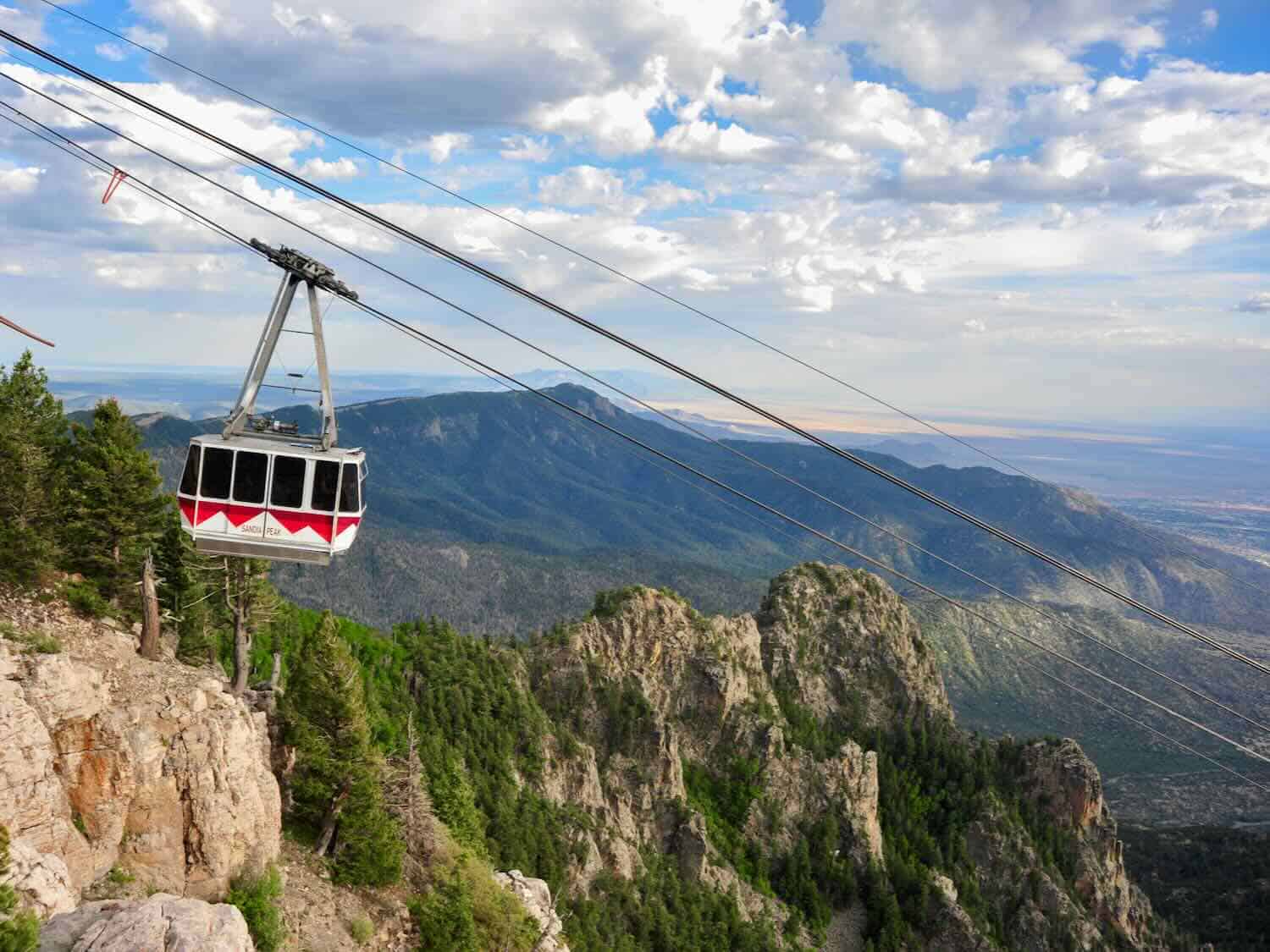
The Sandia Mountains are a range located just east of Albuquerque. The range is mostly within the Cibola National Forest, and part of the range is protected as the Sandia Mountain Wilderness.
The word sandia means watermelon in Spanish, and we learned that it is thought to reference the reddish color of the mountains at sunset. The range is home to the Sandia Peak Ski Area and Tramway. Its highest point is Sandia Crest at 10,678 feet.
Most of the city’s best biking and hiking areas are concentrated in and around the Sandia and Manzano foothills. The Sandia Mountains offer a wide range of hiking, biking, and other recreational opportunities, including more than sixty well-established hiking trails that total over 150 miles.
We did some hiking on the less strenuous trails. Some of the more popular areas in the Sandias are the Tramway, the La Luz Trail, and in the winter, the Capulin Snowplay area, which is approximately 1.5 miles past the base of the Sandia Peak Ski area.
The Sandia Peak Tramway is one of the world’s longest aerial tramways at 2.7 miles. We took it to the top of Sandia Peak and enjoyed an incredible view of the surrounding landscape. The tramway is not the only way to the top, but it was for us.
For energetic hikers, a popular hike to get to Sandia Peak is to follow the La Luz Trail, a seven mile trek up the west side of the mountain with about 3700 feet of elevation gain. Hikers can purchase one-way tickets if they decide to hike up and ride the tram back down.
Sandia Peak Tramway tickets are available online at the tramway website. You’ll also learn about information closures plus watch webcams to check out current conditions.
Boomer Travel Tip
Looking for a New Mexico back roads adventure? Here you go.
Hot Air Ballooning in Albuquerque
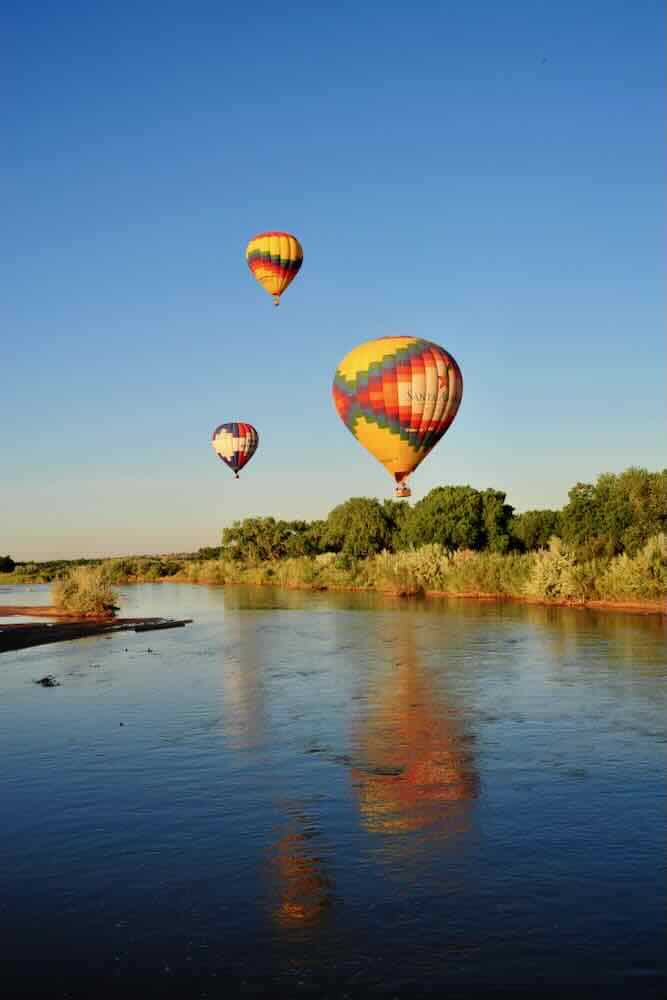
One of the best things to do in Albuquerque, and the highlight of our trip, was the hot air balloon ride. We used the Rainbow Ryders Hot Air Balloons.
The company has large baskets that can accommodate eight to ten riders. It is true what people say about being in a hot air balloon. It’s quiet up there, except for the occasional use of the burners that heat the air within the balloon.
There is no more appropriate city for the Anderson Abruzzo International Balloon Museum (official website) than Albuquerque. The museum exhibits include artifacts and materials related to the history of ballooning and the science behind ballooning. We found the museum very educational, especially after our hot air balloon ride.
The Albuquerque Museum
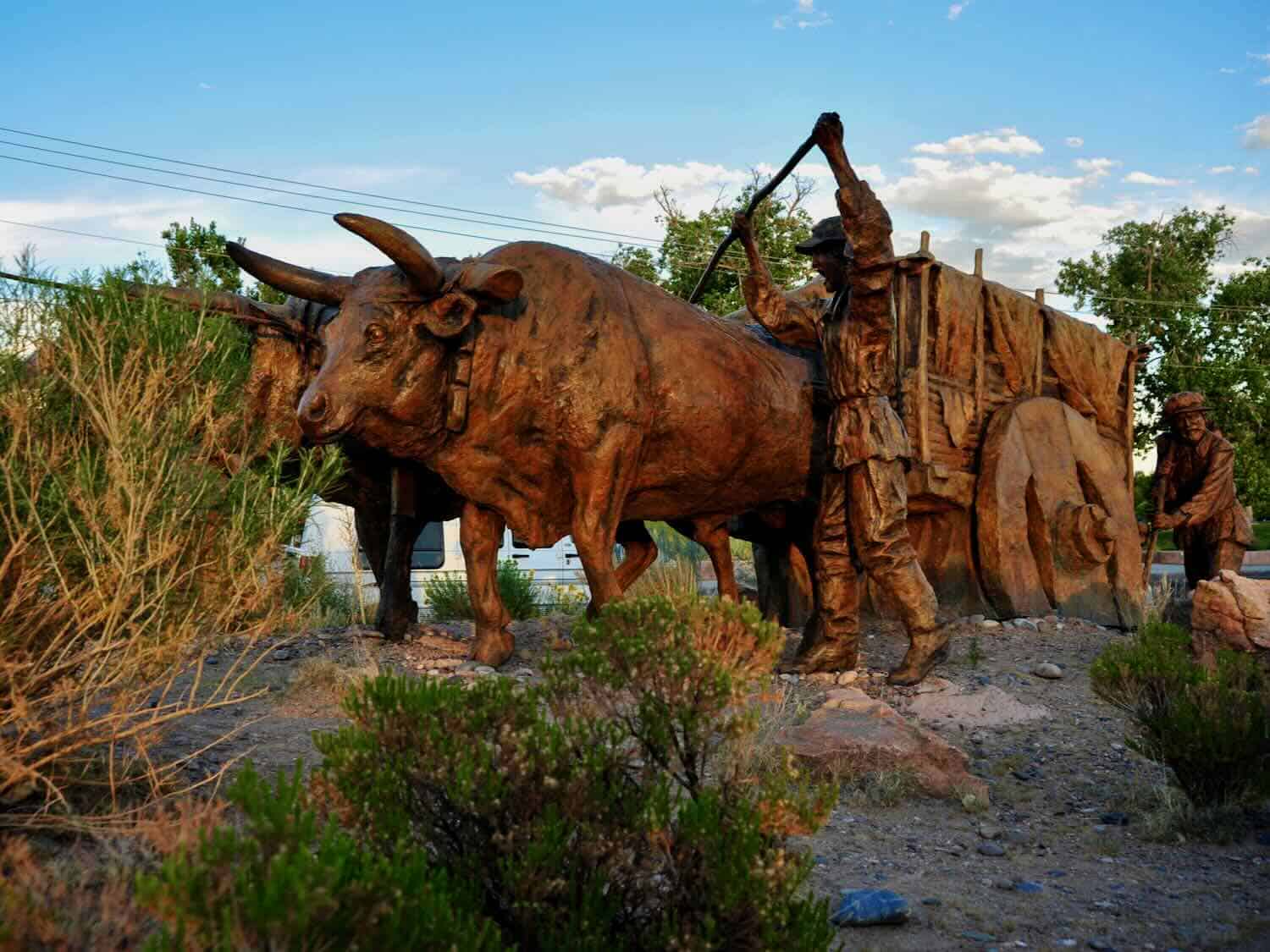
The Albuquerque Museum is a public art and history museum located in the Old Town area. It’s dedicated to preserving the art of the American Southwest and the history of Albuquerque and the Rio Grande Valley of New Mexico.
I’ve included the museum as an Albuquerque outdoor activity because of the sculpture garden. My wife and I were impressed by the works in the outdoor sculpture garden, which had large scale artwork in metal and stone that appropriately depicts the history of Albuquerque.
Indian Pueblo Cultural Center
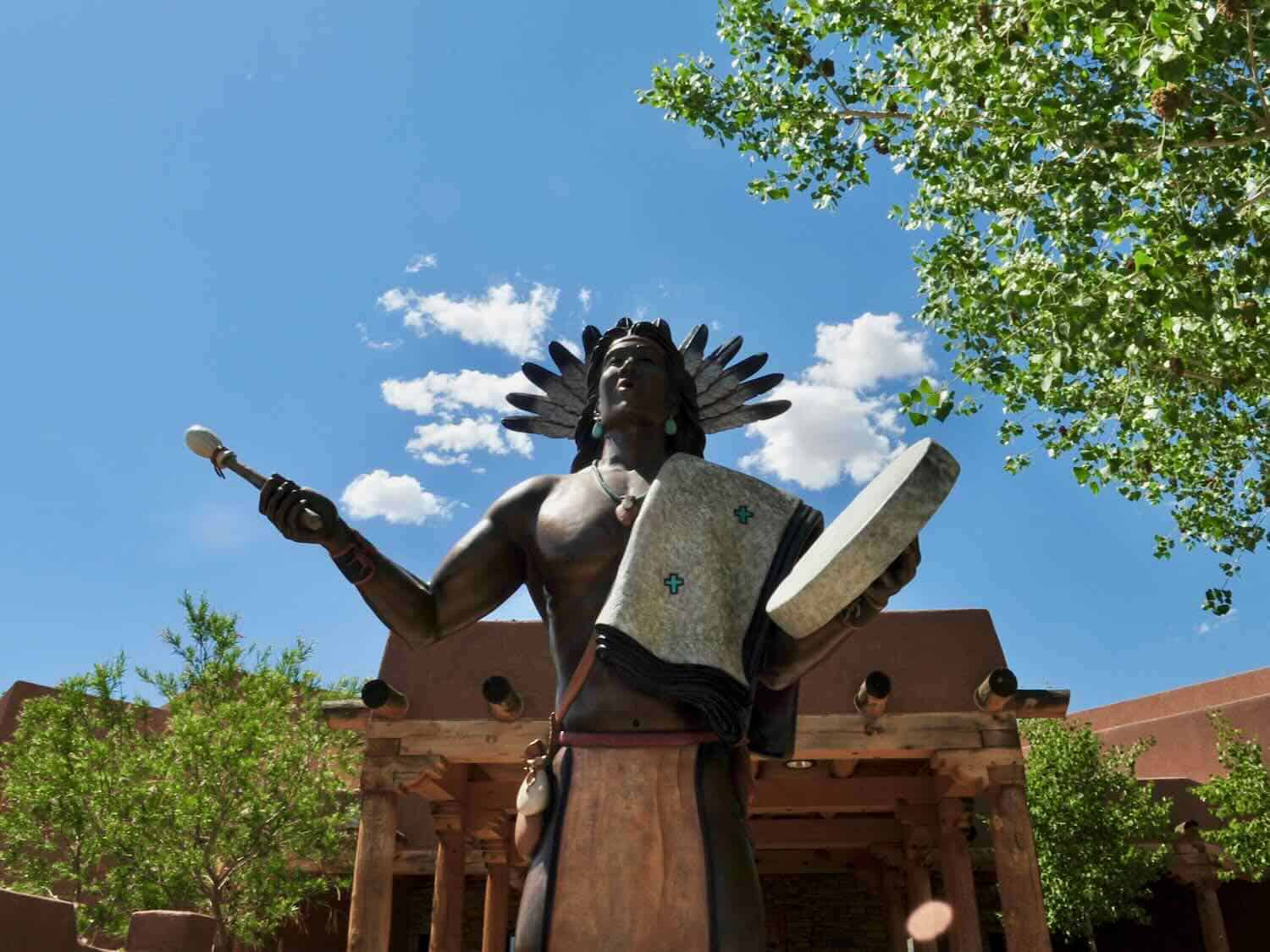
Although the Indian Pueblo Cultural Center is not outdoors, it deserves to be explored. Owned and operated by the nineteen Indian Pueblos of New Mexico, the center offers 10,000 square feet of space filled with displays and art.
Walking through the center, we admired artifacts and history of traditional Pueblo cultures and their contemporary art. My wife and I also learned a few Spanish words, including the word “pueblo,” which is used for “town” or “village” or “people”.
Boomer Travel Tip
Where should you stay in Albuquerque? Start your lodging search here.
Outdoor activities near Albuquerque
You’ll find many fun things to do in Albuquerque beyond the Old Town, Sandia Peak, and open spaces like Rio Grande Valley State Park. Of course, art, history and nature play a big part in your good time.
The Bosque del Apache National Wildlife Refuge
We heard about a special wildlife refuge south of Albuquerque near the town of Socorro off Interstate 25. The Bosque del Apache National Wildlife Refuge (official website) offers unique viewing opportunities during the winter months from November to February.
During this time wintering bald eagles, snow geese, and sandhill cranes make this refuge a seasonal home. There is a fifteen-mile auto loop tour allowing visitors the chance to see and photograph wildlife.
We wished we had the opportunity to visit this refuge especially because of our love for birding. Maybe another time.
Petroglyph National Monument
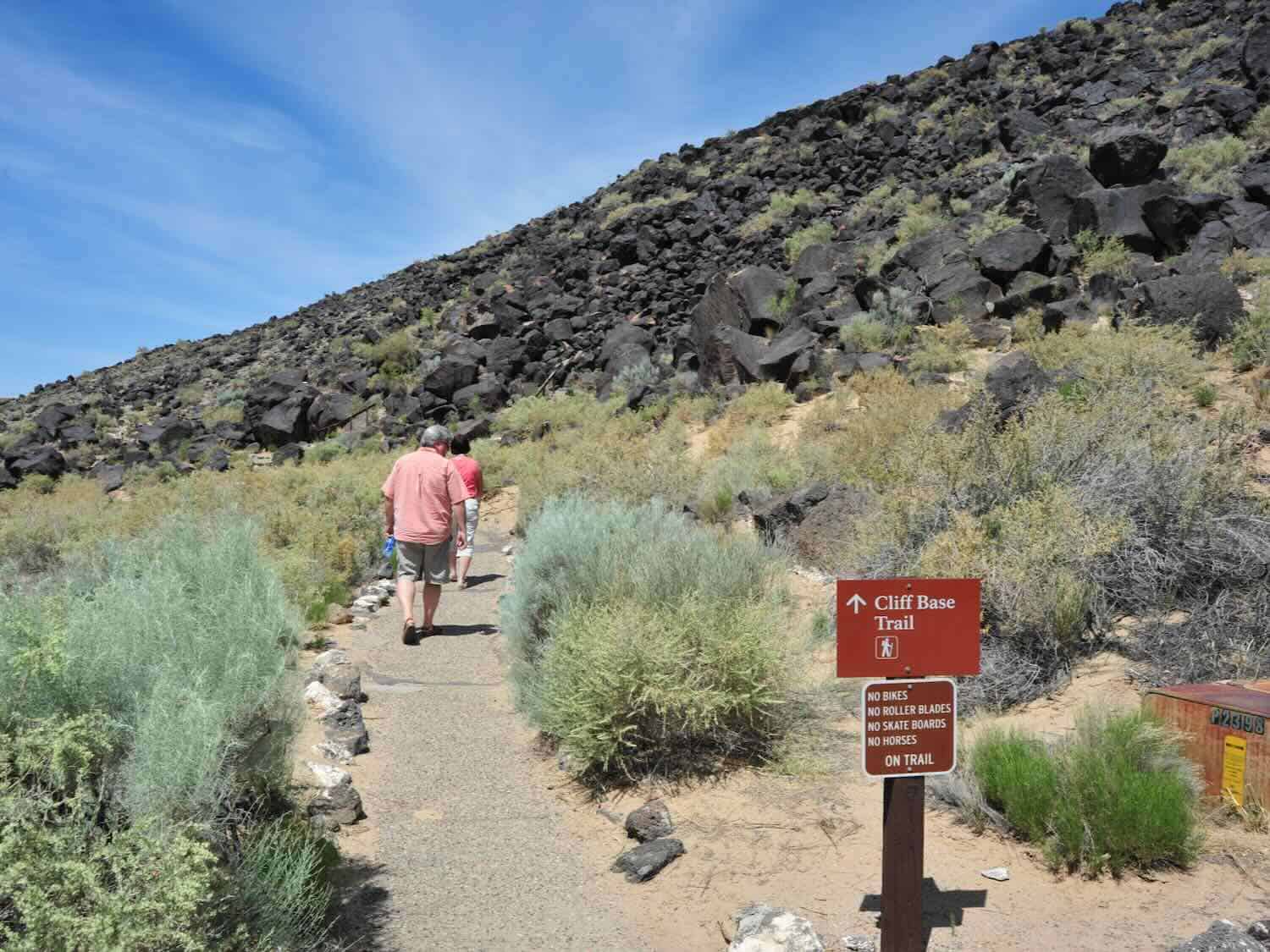
We also visited the Petroglyph National Monument (official website), which is just outside the Albuquerque city limits. From the national monument, the core of five volcanoes are visible along the horizon.
According to geologists, these extinct volcanoes produced dark gray basalt upon which petroglyphs are carved. Petroglyphs are rock carvings made by ancient people.
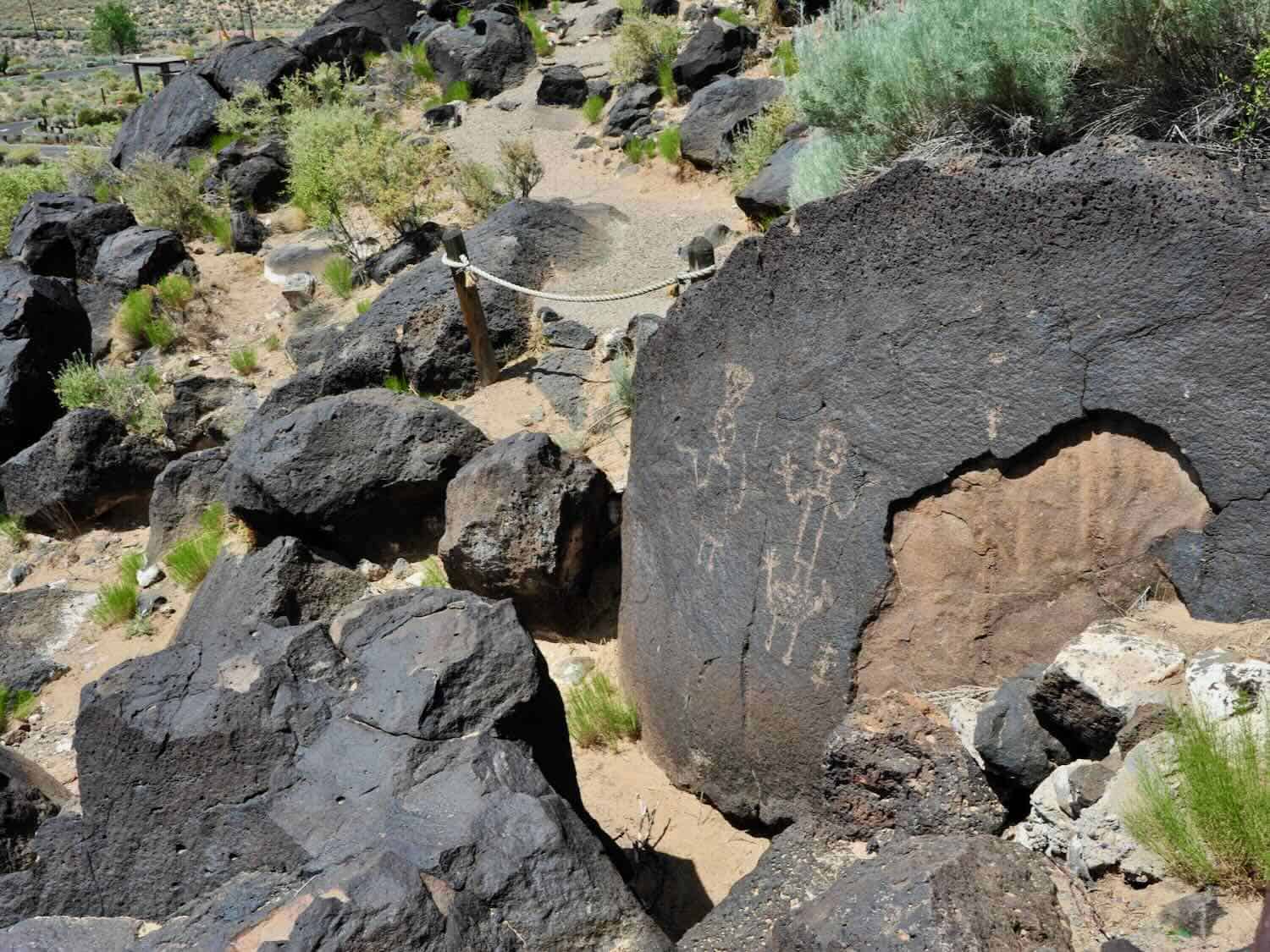
It is estimated that there are 24,000 petroglyphs in the national monument. We took short hikes to view some of the impressive petroglyphs.
The national monument is composed of three sections — Boca Negra Canyon, Rinconada Canyon, and Piedras Marcadas Canyon (another Open Spaces area of Albuquerque). All three have petroglyphs. All have hiking trails. The Boca Negra is the most visited and has three well marked trails.
Jemez Mountain Scenic Byway
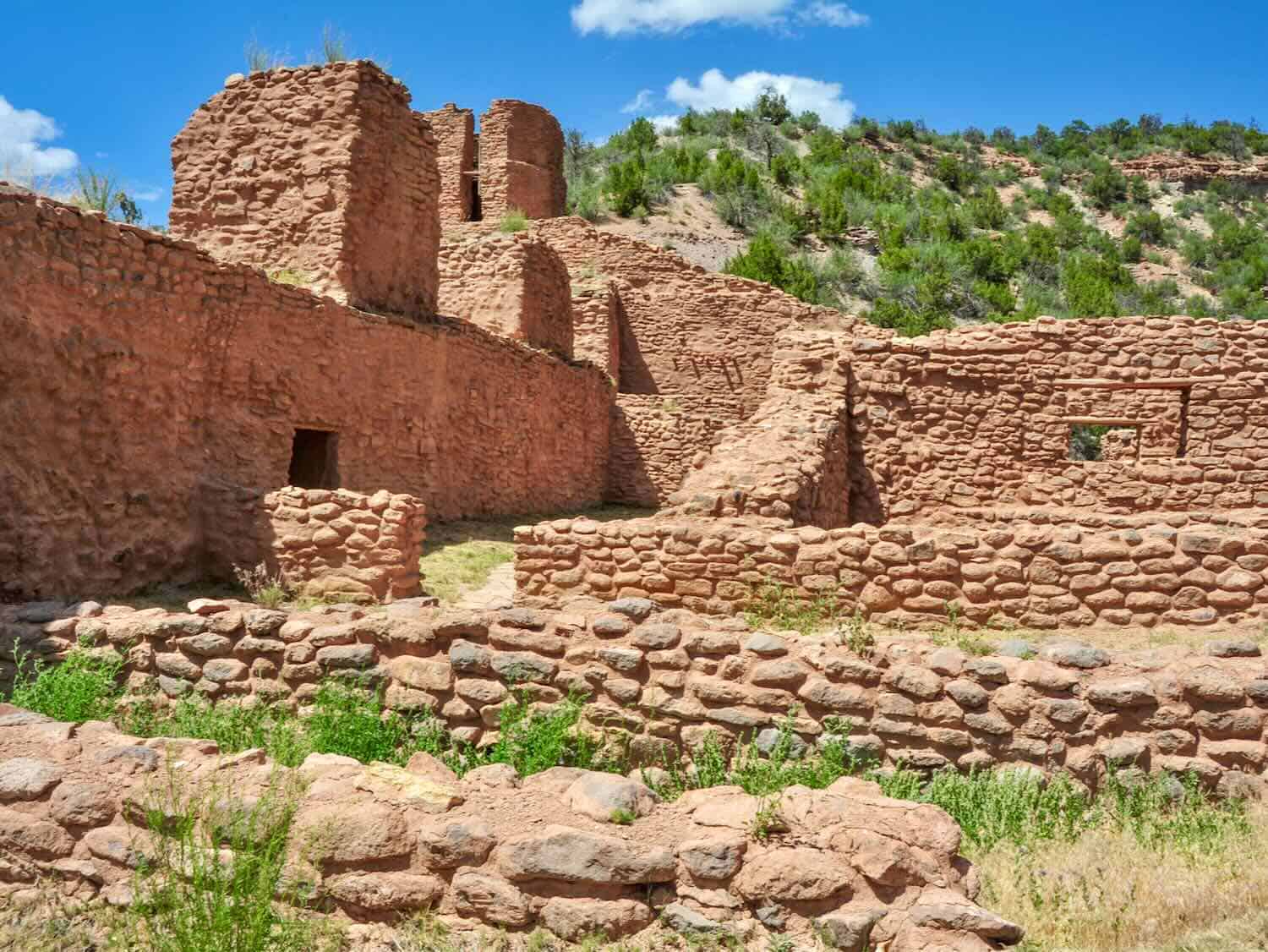
A day trip along another trail in the Albuquerque area, with many possibilities for outdoor recreation and Native American history, is the Jemez Mountain Scenic Byway (official website). It is north of the city and begins at San Ysidro.
The Pueblo of Jemez is an Indian village five miles north of San Ysidro and is located in the scenic Red Rocks area. When we visited, we took a hiking trail called the Red Rock Canyon Trail from the Walatowa Visitor Center through the Red Rocks area.
The Jemez Mountain Scenic Byway has many attractions which we investigated. North of the town of Jemez Springs, we explored Jemez State Monument, Soda Dam, and Battleship Rock.
Jemez State Monument is the location of remains of an ancient pueblo of the Jemez Indians and a 17th century Spanish mission called San Jose de los Jemez.
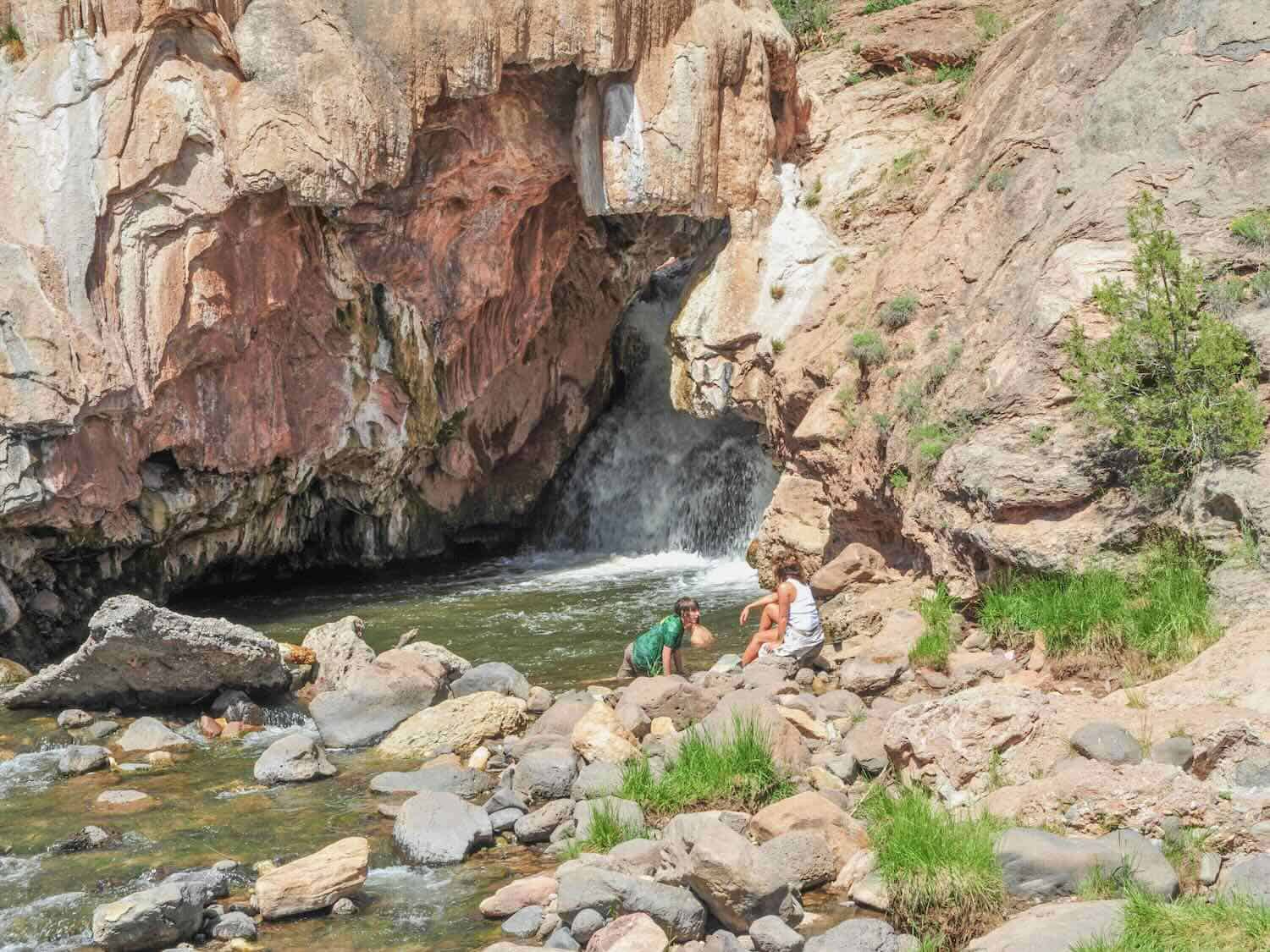
We also stopped at Soda Dam and Battleship Rock. Soda Dam is a unique geologic formation in the Jemez River, formed by water flowing from underground hot springs. It is located almost a mile north of Jemez Springs.
The 200-foot tall rock formation called Battleship Rock has a picnic area and trails along the base of the formation and along the Jemez River. We only stopped briefly there.
The Jemez Mountain Scenic Byway continues to the city of Los Alamos and then to the Bandelier National Monument, which has remains of cliff houses from 13th century Pueblo Indians. Unfortunately, our day trip did not allow time to visit Bandelier.
Although we visited many of the attractions of Albuquerque and the surrounding areas, adding additional days to our itinerary would have allowed us to explore more. With numerous trails in and around the city leading to many historical sites, plus an abundance of outdoor recreation, we could have stayed busy for days.
Boomer Travel Tip
We use the New Mexico Road & Recreation Atlas by Benchmark for exploring The Land of Enchantment.
What’s the weather like in Albuquerque?

We found that the city of Albuquerque had a climate much different than that of West Tennessee, where my bride and I live. Albuquerque is bisected by the Rio Grande River, and lies within the northern and upper edges of the Chihuahuan Desert. That means low humidity and little rainfall.
As a matter of fact, on average there are 310 days of sunshine, an annual rainfall amount of about nine inches, and an average relative humidity of only 44%. So, as a precaution, that low humidity and much sunshine means that we would need to stay well hydrated by drinking lots of water and by using sun protection.
Also, the effects of the sun are somewhat intensified because of the city’s altitude. Albuquerque has one of the highest elevations of any major city in the United States. The elevation of the city ranges from 4,900 feet above sea level near the Rio Grande Valley to over 6,700 feet in the foothills of the Sandias.
Remember the sunscreen and bring lots of water with you.


